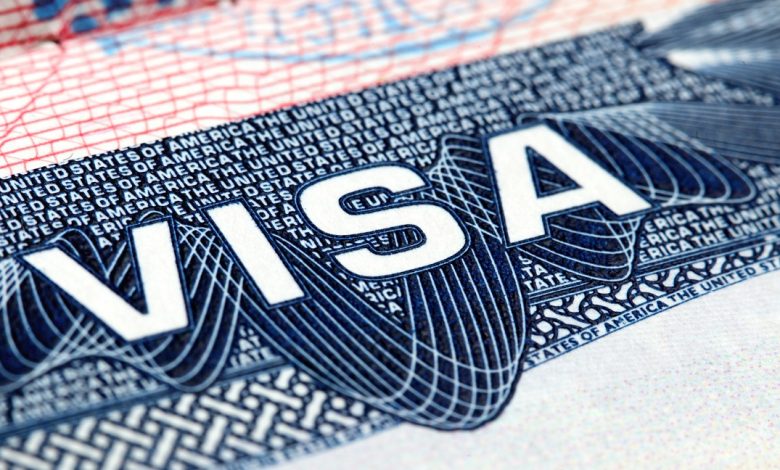
What is Concurrent Filing in U.S. immigration process?
Concurrent filing, in the context of U.S. immigration, refers to the practice of submitting multiple immigration-related applications or petitions at the same time for the same beneficiary. This allows individuals to pursue multiple immigration benefits simultaneously rather than waiting for one application to be approved before filing another. The most common scenario for concurrent filing involves submitting both an immigrant visa petition and an application for adjustment of status (Form I-485) concurrently.
Here’s an example to illustrate concurrent filing:
- Immigrant Visa Petition (Form I-130): If a U.S. citizen or permanent resident wants to sponsor a family member for a green card, they typically start by filing an immigrant visa petition (Form I-130) on behalf of the beneficiary. This establishes the qualifying family relationship.
- Adjustment of Status (Form I-485): Once the Form I-130 is filed and pending with U.S. Citizenship and Immigration Services (USCIS), the beneficiary, if eligible, can concurrently file an application for adjustment of status (Form I-485). This application is for obtaining lawful permanent resident status (green card) while remaining in the United States. The concurrent filing allows the beneficiary to potentially receive a work permit (Employment Authorization Document or EAD) and travel permit (Advance Parole) while their green card application is pending.
- Consular Processing: Alternatively, if the beneficiary is outside the United States, the petitioner can file the Form I-130 and the beneficiary can apply for an immigrant visa at a U.S. embassy or consulate abroad, using the approved I-130 petition as the basis.
Concurrent filing can also apply to other immigration-related forms and processes, depending on the specific circumstances and immigration category. It is important to note that eligibility and procedures may vary, and applicants should carefully follow the instructions provided by USCIS or the U.S. Department of State to ensure proper concurrent filing. Additionally, consulting with an immigration attorney or accredited representative can be helpful to navigate the complexities of the U.S. immigration process.
Concurrent filing eligibility
Concurrent filing eligibility depends on the specific immigration category and the relationship between the petitioner (the sponsoring U.S. citizen or permanent resident) and the beneficiary (the person seeking an immigration benefit). Not all immigration categories allow for concurrent filing. Here are some common scenarios where concurrent filing may be eligible:
- Family-Based Immigration (Form I-130 and Form I-485):
- U.S. citizens filing for their immediate relatives (spouse, parent, or unmarried child under 21) can typically file Forms I-130 and I-485 concurrently.
- U.S. lawful permanent residents filing for their spouse or unmarried child under 21 can also usually file Forms I-130 and I-485 concurrently.
- Employment-Based Immigration (Form I-140 and Form I-485):
- In certain employment-based immigrant visa categories, such as EB-1, EB-2, and EB-3, individuals who have an approved Form I-140 (Immigrant Petition for Alien Worker) can file Form I-485 concurrently if a visa number is available.
- Fiancé(e) Visas (Form I-129F and Form I-485):
- When a U.S. citizen petitions for a K-1 fiancé(e) visa, their fiancé(e) can file Form I-485 to adjust status to a permanent resident in the United States after entering on a K-1 visa and marrying the U.S. citizen petitioner.
- Asylum and Refugee-Based Cases (Form I-589 and Form I-485):
- Asylees and refugees may be eligible to file Form I-485 to adjust their status to lawful permanent resident after being granted asylum or refugee status.
It’s essential to consult the specific USCIS instructions and eligibility requirements for each immigration category, as they may change over time, and eligibility criteria can be complex. Additionally, the availability of concurrent filing may depend on factors like visa bulletin dates, visa quotas, and the priority date, which can impact when the beneficiary can file Form I-485.
How to apply for concurrent Adjustment of Status?
Applying for concurrent adjustment of status in the United States typically involves filing both the immigrant visa petition (Form I-130 or Form I-140) and the adjustment of status application (Form I-485) at the same time. Here are the general steps to apply for concurrent adjustment of status:
- Determine Eligibility:
- Ensure that you are eligible for both the immigrant visa category and adjustment of status. Eligibility criteria can vary depending on the immigration category and your relationship to the petitioner.
- File the Immigrant Visa Petition (Form I-130 or Form I-140):
- If you’re applying based on family sponsorship, the sponsoring U.S. citizen or permanent resident must file Form I-130 (Petition for Alien Relative) on your behalf.
- If you’re applying based on employment, your employer must file Form I-140 (Immigrant Petition for Alien Worker) on your behalf.
- Wait for USCIS Action:
- After filing the immigrant visa petition, USCIS will process the petition and, if approved, issue a Notice of Approval (Form I-797).
- Prepare the Adjustment of Status Application (Form I-485):
- Complete Form I-485 (Application to Register Permanent Residence or Adjust Status) according to the most recent instructions provided by USCIS.
- Ensure you have all required supporting documents, including identity documents, passport-sized photos, proof of lawful entry (if applicable), and any additional documentation specific to your case.
- Include the appropriate filing fee, if required.
- Compile a Packet:
- Organize your Form I-485 application, supporting documents, and any other required forms in a neat and organized packet.
- Submit Concurrent Filing:
- Mail your completed Form I-485 application packet to the USCIS Lockbox facility designated in the form instructions.
- Ensure that you enclose a copy of the Form I-797 approval notice for the immigrant visa petition (Form I-130 or I-140).
- USCIS will accept both the immigrant visa petition and the adjustment of status application as a concurrent filing.
- Receive USCIS Receipt Notice:
- After USCIS receives your Form I-485 application, you should receive a receipt notice acknowledging your application.
- Biometrics Appointment:
- USCIS will schedule you for a biometrics appointment to collect fingerprints, photographs, and signatures for background checks.
- Attend an Interview (if required):
- Depending on your case, you may be required to attend an interview at a USCIS office. Prepare for the interview by gathering any requested documentation and being ready to answer questions about your application and eligibility.
- Receive a Decision:
- USCIS will review your application, conduct background checks, and make a decision on your adjustment of status application.
- Receive a Green Card (if approved):
- If your application is approved, USCIS will send you a permanent resident card (green card) by mail.




![10 Stylish YouTube Music Promotion Service IN 2022 [Updated]](https://www.recablog.com/wp-content/uploads/2022/07/10-Stylish-YouTube-Music-Promotion-Service-IN-2022-Updated-390x220.jpg)
